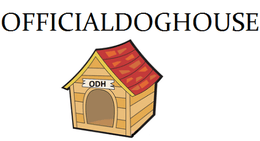Dog Collar Information & Sizing Tips
There are many styles of dog collars to choose from depending on your dog's size and disposition, and your training need. For the majority of dogs, a traditional nylon or leather dog collar is sufficient. Other dog collars for specific situations are described below.
Traditional Dog Collars: Traditional dog collars are available in a variety of styles, colors, and widths. They should ride high on your pet's neck, not loose so that it slides down near the top of his shoulder blades. Dog Collars should be snug with enough room to fit two fingers between your dog's neck and his collar. For your dog's safety, the collar should not be loose enough to slip over the pet's head. Collars should also not be so tight as to restrict breathing or cause coughing. Check collar size frequently on growing puppies. Use a tape measure to measure your pet's neck, then add on two to three inches.

Choose collar and lead width with hardware that matches your pet's size. Smaller, lightweight choices are for small dogs and puppies, and wider, more durable styles are for bigger, stronger pets.
Every collar you own should have a current name tag or name collar attached to it at all times.
Dog Harnesses: Harnesses, which go around the neck and around the shoulders behind the front legs, are recommended for dogs who have upper respiratory disease or diseases of the throat or trachea, such as a collapsed trachea. If a dog with a collar pulls on the leash, it places pressure on the throat and trachea, causing irritation and coughing. Harnesses relieve that pressure.
Halter-type Dog Collars will give you the best control over your dog. They give you control of your dog's head and when you have control of the dog's head, you have control of the dog. There are several brands of these halter-type collars including the Gentle Leader Headcollar. These collars look more like a horse's halter, with a band going around the back of the head, and another around the nose. The leash snaps onto the collar under the chin. When you pull on the leash, the dog's head will either be pulled down or to the side - this makes it virtually impossible for the dog to move ahead or pull you forward.
Some people are hesitant to use the collar since they feel it looks more like a muzzle than a collar. You may have people ask you about the collar, but more often than not, when you are through explaining it, they will ask you where they can get one for their dog.
Martingale-Slip Dog Collars: Nylon-slip collars or combo collars, are similar to check chain or 'choke collars,' and provide effective correction for training and retraining when used appropriately. These collars are most often used for dogs that are strong-willed, pull when on a lead, or those that do not respond to training when wearing traditional collars.
If you plan to use a choke collar on your dog, have a trainer show you how to use it correctly. Correct usage involves a quick 'tug-and-release' action (as opposed to a steady pulling) that tells the pet a different behavior is desired. These collars should only be worn during training sessions, never in a crate, and avoided in pets with delicate tracheas, such as Yorkshire Terriers.
For correct sizing, measure your pet's neck and add 2-1/2"- 3". There is a right and wrong way to put a slip collar on a dog. To correctly place a collar on a dog, the top ring on a properly-looped collar forms a letter P when you stand in front of the dog and pull it snug. If it forms the number 9, it is on backward and may not release immediately as designed, which may cause discomfort or gagging.
Pronged Collars: Pronged Collars, also called pinch collars, contain blunt prongs that protrude inward from the links. Designed for only the most stubborn pullers, While they are safe when used properly, we have chosen not to sell this type of product because if used wrong, it can cause harm to dogs. Halter-type collars give you more control and are much less likely to harm your dog.
We have found that owners who know how to correctly train dogs rarely need these types of collars. Rather, they learned they were training their pet incorrectly, and were able to successfully train their dog using other collars after learning proper methods.

